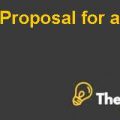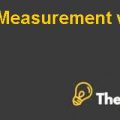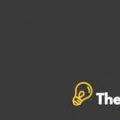
INTRODUCTION
One of the most leading players in the salty and sweet snack food industry in Spain is Ibersnacks S.A. The 1300 sales force of the company helped the company to boost its sales which has led the company to achieve the average sales growth rate of 20% over the years which is above the industry growth rate. The company is operating in an industry where it is surrounded by many competitors, most of which have many financial resources. However, the company is the leading player due to its increased market share and double sales growth rate as compared to the industry. The management of Ibersnacks S.A is now facing a critical issue. The company wants to raise funds of about 500 million pesetas to finance the working capital needs of one of its new product lines. The company has many alternatives to seek this finance; however, the company wants to fund this loan with the minimum amount of financing cost so that the company could capitalize on lower costs and competitive prices in the industry.
ANALYSIS OF COSTS OF FINANCING
The management of Ibersnacks S.A has approached its bank to seek the required finance for its working capital requirements. Its bank had provided the company with two choices. The first choice related to the borrowing in the domestic currency which is pesetas. The total cost of financing for the given months has been calculated in the spreadsheet. The total cost of financing in the domestic currency would be around 530 pesetas. This financing cost is based on MIBOR plus 50 basis points. The second option granted to the company was that the company could borrow this amount in any other major currency of the world at LIBOR plus 75 basis points. The total cost of financing has been calculated if the management of Ibersnacks decides to borrow from the United States where the interest rates were lower and the exchange rate of Spain was stronger than that of the United States. The calculations have been performed in the spreadsheet and the total cost of the financing method has been calculated. The total cost in pesetas would be 187 pesetas. This option would save the company 344 pesetas. The company should also consider other major currencies against which the peseta was stronger currently. Then the company should borrow from the country where the net cost of financing is the lowest. In the calculations performed in the spreadsheet, if the company borrows the required funds from the United States, then it would be the ideal condition for the company. This would save the company a lot of cost and the margins of the company would also improve.
FOREIGN EXCHANGE RISK
Foreign exchange risk is the risk that a company or any other entity faces as a result of the fluctuation in the exchange rates between two countries. If the company goes forward with the second option of borrowing the necessary funds from the United States then the company would be exposed to foreign exchange risk. Currently, there was a gap of about 9% between the interest rates of $ and the pesetas. The company could gain a competitive advantage by availing this cheaper finance. However, the huge risks also involved the devaluation of peseta against other foreign currencies. The politicians of Spain had stated that the policy of Banco de Espana was hindering and damaging the competitiveness of the Spanish economy. Other people argued that the peseta would devalue in the future when the German Bundesbank reduces its interest rates. Therefore, the company also needs to consider other financing alternatives, the risks associated with the exchange losses and the future funding requirements of the company. After the detailed analyses of these factors the company should decide to borrow the funds in other currency rather than its domestic currency to avail the cheaper source of finance.
OTHER RECOMMENDATIONS AND CHOICE OF FINANCING
There are also other recommendations for the company to mitigate the risks exposed by the foreign exchange fluctuations. The company could hedge its transaction and take an opposite position in the market to save itself from exchange losses. The company could make use of forward, futures, swaps and option contracts................................
This is just a sample partial case solution. Please place the order on the website to order your own originally done case solution.
Provides a framework for the implementation of cost analysis of various options for funding currency. Allows for the measurement of foreign exchange risk and its impact on financial firms, costs, and its operating margin. Also, the links between the competitive position of the firm and its choice of financing. "Hide
by Donald R. Lessard, Ahmad Rahnema Source: IESE 8 pages. Publication Date: January 1, 1993. Prod. #: IES017-PDF-ENG











